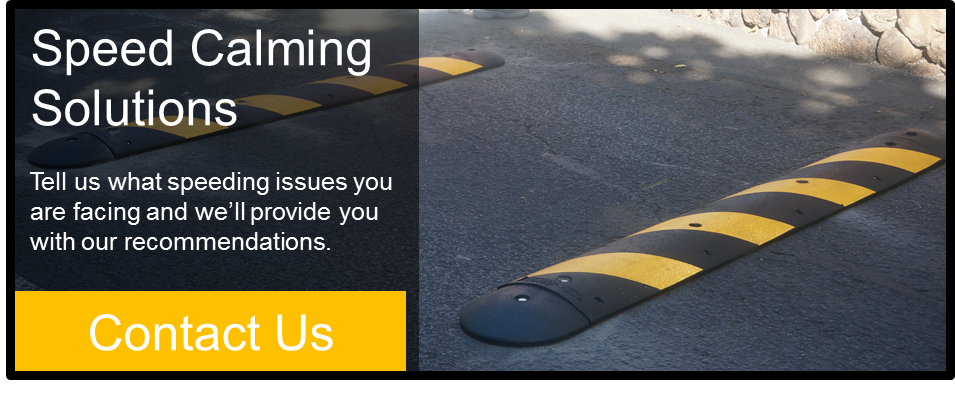By Scott Lai
You might have had a couple of close calls on your property, or even received complaints from tenants/employees about speeding in your parking lot. Installing a STOP sign is a good first step to reduce speeding. But it’s very easy for a speeding motorist to completely ignore a STOP sign and drive through. If your STOP sign is being ignored, it may be time to take an aggressive approach to reduce speeding in your parking lot.
Speed Bumps
Speed bumps are an ideal solution to enforce a STOP sign because they are designed to reduce vehicle speeds to about 2-5 miles per hour. The goal is to slow vehicles down to a minimum or to a halt. If placed before a STOP sign, it forces motorists to at a minimum, slow down. It’s an aggressive approach to reduce speeding. If your parking lot or facility has issues with motorists ignoring STOP signs, placing a speed bump before the STOP sign can be a very effective solution to enforce a motorist to stop. Speed bumps are normally installed eight feet before a STOP bar.
If one speed bump is not enough to slow down motorists, you can install a second speed bump.
Speeding in parking lots is a common issue property managers and facility managers face. You’re responsible for the safety of your visitors, tenants, and employees. Installing a speed bump is a cost-effective solution to reduce speeding and prevent close calls from turning into actual accidents.
 Scott is an Outside Sales Representative of G P Roadway Solutions. As a former property manager, Scott now helps other property managers improve the safety of their properties and facilities. Connect with Scott on LinkedIn.
Scott is an Outside Sales Representative of G P Roadway Solutions. As a former property manager, Scott now helps other property managers improve the safety of their properties and facilities. Connect with Scott on LinkedIn.

